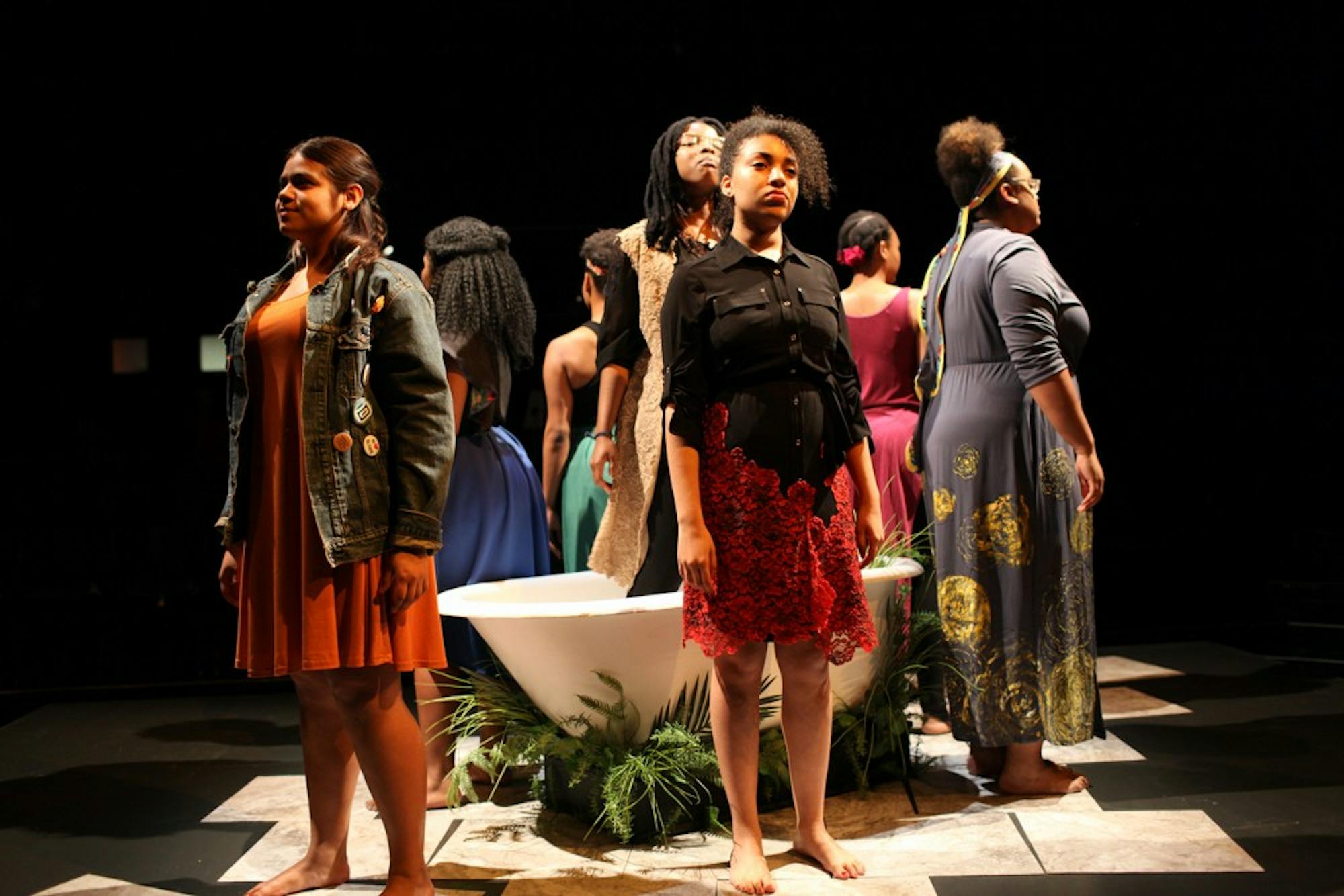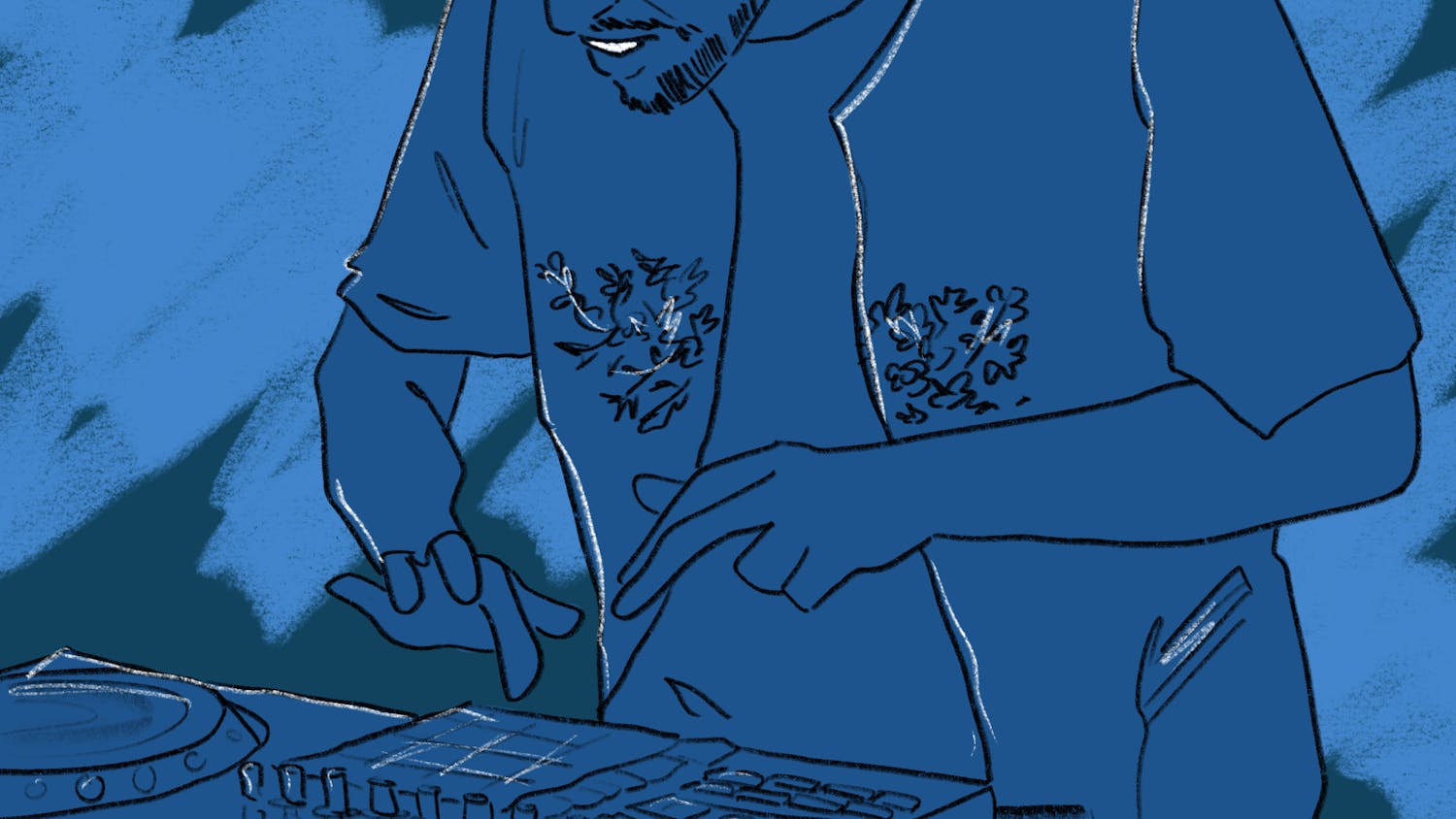As the pop tunes stop playing and the lights begin to dim, seven women walk slowly onto the stage from all corners of the Bentley Auditorium, distinguishing themselves from the crowds they mingled with just moments before. Plants and scattered marble tiles that become increasingly strewn at the stage’s far reaches surround a porcelain bathtub. The audience encircles the raised black platform on all four sides, allowing the members to view each other’s reactions throughout the performance. As the actresses move between the edges of the auditorium and its center, all are pulled into the narrative, while equally reminded of the larger implications of the work, still relevant despite being 40 years old, as a reflection of women of color’s experiences today both at Dartmouth and in the world.
As a woman of color and a student activist, Carene Mekertichyan ’16 saw her honors thesis production of “for colored girls who have considered suicide / when the rainbow is enuf” (1976) as a way to embrace the nuances of her identity while onstage.
The choreopoem embraces many elements of theatrical jazz and Yoruba traditions, including call-and-response sequences and a nonlinear narrative.
The show also focuses on the efforts of women of color to find self-love in a society that often silences them and devalues them.
In the piece, Mekertichyan plays the Lady in Red, a character who in one story attempts to reclaim her sexual freedom as a woman of color and revert traditional gender dynamics and in another experiences domestic violence and the loss of both of her children at the hand of her abusive ex-partner and father of her children.
As dramaturge, Mekertichyan also had a supervisory and consulting role in all aspects of production. Along with guest director Deena Selenow, brought through the theater department’s VOICES program, Mekertichyan thus worked to not only bring up issues that women of color face but also to make them part of a larger community discussion.
The show ended with some sharp emotional punches. Zahra Ruffin ’17, playing the Lady in Blue, delivered a poem on her character’s emotions after being raped. Shaking and confused, Ruffin staggered around the stage as if bearing a physical wound, eventually collapsing into tears as she stood in the bathtub.
As both the audience and the actresses became more enveloped by the stories, this idea of a particular wound borne by women of color followed visually and emotionally throughout the piece, increasingly expressed both in the movement of the actresses and in their stories.
Even during instances of comic relief, trauma remained a consistent factor in the piece, whether imprinted in the sense of the characters’ self worth after years of maltreatment or in the audiences’ memory of more recent narratives.
As the choreopoem came to an end, the women held hands, facing the outside world which had once pushed them to consider suicide in solidarity. Yet as they chanted “i found god in myself/ and i loved her/ i loved her fiercely” over and over, the audience felt both empowered and overwhelmed.
After the show ended, Selenow encouraged the audience to dance to their emotions out to a few songs by Beyoncé before the post-show discussion. Although few did, many audience members congratulated their friends on their performances, noting both the number of times they had cried and how much they enjoyed the performance.
As conversations came to an end, Selenow led the post-show discussion, encouraging audience members to move beyond the more subjective “like” and “don’t like” to more applicable themes.
She first asked the audience members what moments stuck out to them. One audience member said that the talk on rape, which included discussing how perpetrators may be someone close to the victim, resonated with him. He noted that it was a theme applicable to students on campus as well.
Another audience member noted the way Mekertichyan dealt with men as the Lady in Red. Although she reverses the “joke” men often play on women, she ends up crying, a theme he saw throughout the play.
Veronica Burt ’16, a theater major who is also friends with Mekertichyan, said that she enjoyed the way the choreography emphasized the text of the piece. She also noted the value of the positioning of the audience.
“You’re seeing the other person’s reactions across the room from you, and it feels more like an intimate activity,” Burt said.
Selenow’s second discussion prompt asked about the value of the production in this day and age, an issue Mekertichyan answered as part of her thesis.
Gricelda “Grizzy” Ramos ’18, who played the Lady in Orange, said that she found the work very therapeutic, noting the pressure she felt as a woman of color to bottle up her thoughts. She said this piece, however, reinforced the idea that it was acceptable to open up.
Selenow ended the discussion by imparting some last words to her audience.
“When you see a friend that is not being seen, elevate them,” Selenow said. “When you see something that is not cool, say it.”
Mekertichyan was pleased with the piece.
“It was better than I could have imagined. It was emotional, I was crying, but it was good. At the end, it felt like such a release,” Mekertichyan said. “Feeling the audience’s energy and all of this love in this moment in this space, it was so beautiful.”




